2013 was an unforgettable year full of travelling adventures. I spent time in eight different countries and enjoyed almost twelve weeks of vacation. I’m not sure I’ll be blessed with so much time off in 2014 but I will endeavour to continue fulfilling the adventurous and international lifestyle that my life has taken on over the last few years.
My travels in 2014 would however begin in the very first month of the year. With the 2013 autumn semester fully wrapped up at school and winter camp successfully undertaken my hard-earned winter vacation was gratefully upon me. I had booked some flights to Malaysia back in November, taking advantage of some early release promo prices from Air Asia. On January 12th I hopped on the plane and a tedious six hours later I was safely grounded in Kuala Lumpur (From here on referred to as KL!). A shuttle bus was taken to the city centre and after being briefly confused by an apparent lack of pavements and two similarly named hotels I finally checked into a rather scummy (misleading Agoda photos…) hotel around midnight. Knowing I was going to be undoubtedly tired from the flight (and life in general) I planned to stay in KL for my arrival night and a following night before I headed off early on Tuesday morning to Sarawak, Malaysian Borneo.
Following a restless nights sleep in the company of a savage mosquito or two I headed out to take in a little of KL. I was staying in Brickfields which was only a short walk (when you know where you are going) from KL Sentral. From here I decided to take the Komuter train to Batu Caves, 13km or so north of KL. Upon exiting the dedicated station you are presented with a landscape dominating limestone hill with steep cliff faces that are permeated with various cave entrances. The surrounding area is shrouded with tented street vendors, various temples and when I was there numerous ongoing renovation and expansion works to local businesses. Although there are various cave entrances and systems, most of which were closed for conservation reasons to protect the stalagmites, stalactites and fauna that are unique to the local ecosystem, the main attraction of the ‘Temple’ cave was open.
To enter the cave I first had to negotiate the 272 concrete steps to the cave entrance that began at the foot of a statue of the Hindu deity, Lord Murugan. The statue stands guard at the foot of the climb, glistening golden and reflecting the powerful Malaysian sun upon the pilgrims and tourists. After hesitating at the foot of the stairway with several other visitors because of a ‘no shorts’ sign being amongst the list of don’ts for the temple. I eventually, with a tinge of guilt, decided to climb the stairs and enter the caves after witnessing numerous shorted tourists descending from above. The climb was easy in the wake of recent Korean hiking exploits. The cave entrance was unremarkable but quickly expanded into a grand cavern of cathedral proportions. The surrounding walls of the cave were littered with Hindu shrines, small temples and unshirted Hindu attendants and priests. The cavernous cave continued to a second set of stairs that led to an open roofed cave, the stairway was guarded by Macaque monkeys that surreptitiously eyed visitors for food and loose items to steal. In the open cave tourists and Hindu’s rubbed shoulders outside a temple that had been built in the centre of the open space. On the cliff walls that soared up to the open sky precariously perched monkeys enjoyed throwing leftover coconut shells and banana skins at each other and the people below. I spent some time looking around at the bulbous stalactites, disinterested monkeys and the art adorning the temple before leaving for the Komuter train back to the city.
The remainder of my afternoon was spent at the Midvalley and The Gardens shopping malls in search of some new trail running shoes and some shorts to replace 2013′s weathered and sun-bleached ones. having successfully purchased said items I headed back to my hotel. With hunger overcoming me I headed to nearby Little India walking amongst the light raindrops of what would become a torrential rainstorm. Despite the increasing deluge Little India was busy, the local community huddled under makeshift canvas covers as traders continued to sell street food, colourful garlands and some Tamil people prepared decorations for the upcoming Pongal festival. I wandered around the covered shopfront awnings and walkways before taking a seat in an open walled restaurant. I was presented with tables of people, a buffet of curries and treats and absolutely no clue how to order or pay. A kind waiter ushered me to the buffet and explained the curries. I chose to have a banana leaf buffet and filled my banana leaf with saffron rice, mutton curry and a moist potato dish. At the table I sat with local Indian, Pakistani and Bangladeshi men who ate independently or in small groups. Whilst they ate with their hands, I chose to stick to a familiar fork. My waiter plonked some additional curry sauces in front of me and adorned my plate with some naan and poppadums and I gladly filled my stomach. The grand price, fresh mango juice included, was a mere 8 ringgits, about £1.80!
Tuesday morning, bright and early found me at the bus station headed back to the airport to catch a flight to Kuching, Sarawak. Whilst all of Malaysia is tropical, the states of Sabah and Sarawak sit on the edge of the equator on the island of Borneo. Borneo, the world’s third largest island is divided between Malaysia, Brunei and Indonesia and is home to one of the world’s oldest rainforests at 130million years old.
Feeling frugal I walked from Kuching airport along a dual carriageway and found a bus stop that would take me to Kuching. I checked into an earthy guesthouse and had a nice long nap. In the evening I walked on a road out-of-town encountering surprised and friendly locals who lived in stilted wooden houses before heading back to the city and strolling along the riverfront and watched a few busking shows between some intermittent showers and had a bowl of traditional Sarawak Leksa, a spicy noodle soup.
My rainforest adventures began the following day. I had planned little more than my flight to Kuching, my only intention to explore as much of the natural ecosystem as possible over three days. My first destination would be Bako National Park. Getting to Bako National Park is an adventure in itself. It began with a bumpy public bus ride taken from near the waterfront at 8am in the morning. The bus picked up a few other tourists and locals along the way before arriving at Kampung Bako (Kampung-village). From Kampung Bako I would have to take a boat from a jetty on the river. I teamed up with a French couple, Eric and Veronique who split the cost of a return journey in the slight and rickety river boat. Our captain expertly guided the small vessel through the river estuary, with the tide out, the water was shallow and the boat skidded along the muddy river bed in places. It rained steadily as we glided along and the canvas roof offered little protection from the angled rain, but when heading to a rainforest I decided it didn’t really matter when I got wet, it was an inevitability.
After passing overgrown river banks and mangroves we reached Bako, the small fishing boat deposited us on the beach and we waded ashore to dramatic scenery. At the park we checked in at the reception centre and registered our respective trail plans in case we didn’t return. First up I hiked the yellow forked trails of Telok Pandan Kecil & Telok Pandan Besar. These two trails ascended from the beach through the rainforest up to the higher parts of the island. The terrain began steeply but levelled out quickly where the footing underneath changed from tangled tree roots to sandy, rocky and clay like mud in places. On occasion I had to balance along planked narrow pathways. Telok Pandan Besar ended above an inaccessible beach far below with great views across to the far side of the park, returning to the fork where the path split I took the descent along Telok Pandan Kecil to another deserted beach. The final descent being quite steep and slippery with a rope ladder down a cliff face to the deserted beach itself, it was an incredible feeling to be on a beach on the edge of a rainforest with just open ocean in front of me, not a person insight or encountered on the trail, I was truly alone. The trail provided only minor encounters with wildlife. A distant sighting of a large monitor lizard prowling the beach and plenty of lizards scurrying away when surprised by my appearance and mudskippers on the beach. I spied a large carnivorous pitcher plant on the trail. Following my footsteps back towards the park headquarters I was able to join the white trail of Telok Paku. This trail skimmed the coastline and hugged the gentle slopes beyond the cliff face. This is where the parks heavy hitting wildlife made themselves known. Probiscis monkeys could be seen high in the trees, occasionally crashing around and barking out the smattering of visitors on the trail below. A rare flying lemur made a brief appearance in the canopy. After reaching another beach at the end of the trail I headed back to the park HQ encountering some more probiscis monkeys and trying my best to get a clear photo of them.
Back at the park headquarters I had some spare time. I had previously read on the internet that Wagler’s pit vipers could be found around the edge of the headquarters. The existence of overnight lodges and a cafeteria meant that mice and rats were frequent and of course snakes love a small furry snack. The receptionist giggled and told me to follow her, she shouted to one of the rangers who beckoned me over to a small tree next to one of the lodges. Three metres high in the canopy a menacing camouflaged pit viper lazed on the tree branch. I got as close as I dare, knowing a bite could easily be fatal in such a remote area, and took some photos. Whilst under the tree a probiscis monkey decided to jump from the lodge roof into the tree canopy sending the tree into a tumultuous frenzy. Fearing the snake would be dislodged, or worse still think it was me, I dived for cover. At first I turned to the ranger thinking he was trying to scare me, before he shouted “Look, probiscis monkey!” . Around the back of the HQ I was also able to get up close to some bearded wild pigs and a few other monkeys were dashing around; long-tailed macaques and silvery lutungs.
With the meeting time for our boat journey home fast approaching I seeked out Eric and Veronique and we headed off to meet our boatman at a mangrove on the other side of a nearby headland. The weather was still stormy and the tide was coming in so the boat man had rung the HQ to say he would not be able to reach the beach we had arrived at. Initially we took the wrong path up a cliff face, although this gave Eric and Veronique the chance to see the probiscis monkeys that they had managed to miss all day. Realising our mistake we descended and took the right path. We decided I should go ahead, fearing the boatman would leave without us. In my haste I managed to step on a snake hidden in the tree roots and leaves below, as I felt it squirm under my foot I skipped away before turning to see a metre long dark brown serpent slither away slowly into the jungle. It looked quite safe but it gave me a fright! I’m glad the pit vipers are arboreal! Finally we reached the mangrove and we waded through as the water raised slowly, following in the footsteps of the boat man and praying that none of the saltwater crocodiles that can be found along the river banks were in the area.
The ride back to Kampung Village was tense. The powerful tidal waters collided with the out rushing river waters making huge waves two to three times the height of the boat. The boat man, experience showing in his aged and weathered face, expertly guided the boat between waves before putting on the gas to ride out the surf. Back at the boat station a friendly local told me of days when the conditions were several times worse and boats had been lost and people had to be rescued clinging from the mangroves. I took the public bus back home and bid farewell to my French friends. Bako had been a huge surprise, an intense and jaw-dropping experience.
The following day I was up early again and ready to make the most of another day. My plan was to take the public bus to Semenggoh Wildlife Centre but this was immediately scuppered when the public bus failed to appear when it was supposed to (I was in the wrong place in actuality…). The main reason to go to Semenggoh Wildlife Centre is to see the orangutans that are in the rehabilitation program. With this time being limited to two feeding times a day and with my intention to make the 9.00am morning feeding I needed alternative transport. This came in the form of a 45 ringgit taxi courtesy of a colourful local man. The man in his mid-sixties gave me an interesting education about the local area around Kuching as well as cross-examining my own life. He enjoyed telling his historical tales and it was interesting to listen to them. He gave me some useful phrases in Malay to practice and made me laugh regularly. Although the bus would have been cheaper it was worth the taxi fare just to talk to him.
When my chauffeur dropped me at the gates I paid my meagre entrance fee before hiking up the hill to the wildlife centre. After resting and waiting for the park warden to begin the safety and regulation speech we were led on a forest trail to the feeding area. The guests stood around 50m from a wooden platform where a selection of treats of bananas and dorians was being prepared for the orangutans. Whilst we had been waiting we had heard a few crashes of tree branches in the forest and sure enough a couple of orangutans had made their way to the area already.
During the following hour around 8 or 9 orangutans visited the feeding area. These orangutans ranged from mothers with babies to young adolescents and the alpha male Ritchie who preferred to arrive on the ground rather than flying through the trees. The animals were mildly inquisitive to the on looking humans and a few approached the trees that rose above our heads. The warden had warned that they sometimes like to relieve themselves on the watching people below or even steal something from your hands. Fortunately, the air above and my head stayed dry.
The centre acts as a rehabilitation centre for orphaned and injured orangutans and was at its maximum occupancy. Of the 8/9 orangutans we saw there were another 20 hidden in the forest going about their own business and feeding themselves that morning. The centre claim that if the orangutans are not turning up to the halfway house feeding station then that is signs of a successful program and thus indicating they are fending for themselves. With Semenggoh at full capacity another wildlife centre was now handling newly rescued orangutans.
After watching the playful, strong and beautiful creatures I headed to the bus stop and took the bus back to Kuching. On the way I chatted to an Australian traveller who gave me some good information about places to visit on the main peninsula for later in my holiday. He was on a year-long sabbatical and was travelling around the world. He had some ambitious plans and I wished that I had the time and money to do what he was just embarking on.
In the afternoon I took the opportunity to explore Kuching. I took a river crossing boat and checked out the National Assembly building that dominated the river skyline as well as walking around the back streets of Kuching, the Chinese district and a few other interesting spots.
My final day in Sarawak presented me with some tough choices. I wanted to try some kayaking and mountain biking but the options displayed by local tour groups looked a little tame and the best mountain biking trails were more distinctly focused on the Sabah region. With this in mind I decided to take on the challenge of Mount Santubong. Mount Santubong lies on the peninsula on the opposite side of the river estuary to that of Bako National Park. I had read up a little on the challenge that Mount Santubong presented. It was ear-marked as a particularly tough, steep and physically challenging 804m peak. After having an understanding idea of the terrain from my trip to Bako I was confident the climb would be okay to attempt on my own.
I took the public bus to Santubong and asked the driver to let me off when he passed the trail entrance. We passed through rural Sarawak countryside, dropping off and picking up passengers along the way. The weather was rainy and the mountain appeared with a mystical cloud covering as the journey progressed. The driver shouted to me, released the doors and I found myself at the side of the road at the bottom of the mountain. On the other side of the road a lady in a small wooden hut waved me over. She took my name and personal details before allowing me to climb and warned me about the terrain being slippery but not to worry too much about any dangerous wildlife. There were two entrances to the mountain and she said to make sure I returned to hers so she knew I made it back safely.
The climb began moderately and the tree roots snaking across the path gave good grip. After about thirty minutes of trekking the path significantly steepened. Trekking became more like scurrying and it became important to steady yourself on the tree roots with your hands or by using the ropes that were strung between trees at the side of the trail to haul yourself up the acute slopes. About two-thirds of the way up the first of many rope ladders began. These rope ladders appeared frequently during the rest of the journey and essentially enabled you to climb the vertical rocky cliff faces. The rope ladders ranged from 5m to 25/30m and in the rain the wooden slats for your footing felt slippery and it was a nervous and purposefully sure-footed climb. In some instances it was safer to use the cliff face and the rope only. With my focus on the trail I noticed little wildlife, I saw a few angry monkeys, a funky squirrel and a few lizards that were nearly mistaken for hand holds. The sound of the rainforest around me indicated there was a lot more going on, tropical birds squawked unfamiliar tunes and piles of leaves rustled and moved in the corners of my eyes. After 1 hour 50 minutes I reached the summit. I had checked out a few views from gaps in the treeline on the ascent but mostly the views were obscured by the rain clouds. At the top this remained the case but with the assistance of a stiff wind there were sufficient breaks in the cloud cover to gaze down at the rough sea, winding river and the fishing villages below. I took a few photos at the summit and trekked around the peak between large boulders and scratchy bushes taking it all in.
After about 30 minutes I began the descent. The thought of the descent had put a little fear into me when on the ascent I had seen the overhanging rope ladders knowing that I would be feeling for my footing rather than seeing it but my fears proved unnecessary and I confidently completed the journey down. All-in-all the journey took around three and a half hours, much shorter than the average four hours up and two to three hours down that my research on the internet had suggested. Ironically, I only had one dangerous case of misplaced footing on the slippery rocks that could be found at the end of the trek by the woman’s hut. She had a good giggle as I slipped on my butt when I was carelessly checking my phone for the time. When I reached the hut she asked if I had reached the summit and wouldn’t believe me until I showed her the selfie I had taken at the summit. She said she hadn’t known someone to climb so fast before. Noticing my rather sweaty and muddied appearance she pointed me in the direction of Damai Central and told me I could grab a shower at the beach side centre. I walked the few kilometres down to the beach and dried my sweat and rain-sodden clothes off on the beach wall and had a paddle before the heavens opened again. I grabbed a deserved drink and enjoyed an icy shower. Putting my stinky hiking clothes back on was less than pleasurable; with an ice-cream in hand I blagged my way onto a hotel shuttle bus before heading back for my final night in Kuching.
I paid a quick visit to the launderette, to wash the mosquito repellant that had absorbed its way into most of my travel clothes one way or another over the last few days, before having an amazing meal at a Filipino restaurant on the edge of the Chinese district. At this point my body decided it needed some sleep in preparation for my early morning Saturday flight to Singapore.
As travelling experiences go my time in Sarawak was one of the very best. It involved self-motivated and self-reliant adventure in an unnatural natural environment. I wish I had decided to stay longer in Borneo. I would love to visit Sabah and climb Mt. Kinabalu, the highest mountain in south-east Asia, and also visit some of the wild and unique islands that lie off its north-western coast. It is something I will seriously consider for the future!


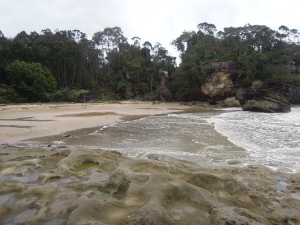
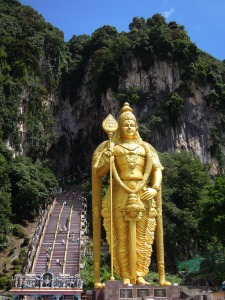
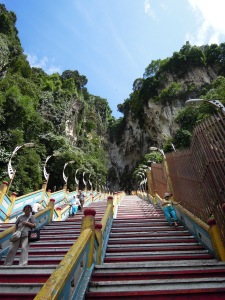
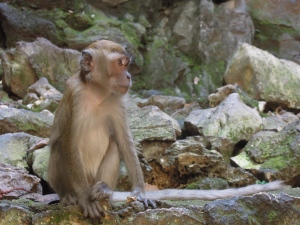
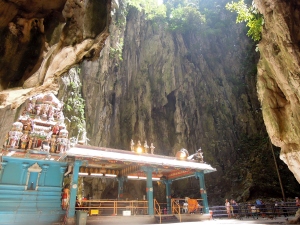
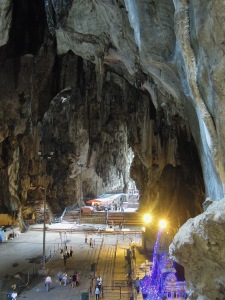
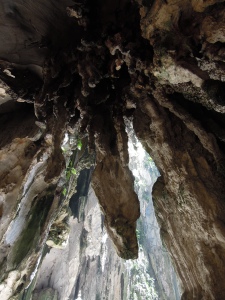
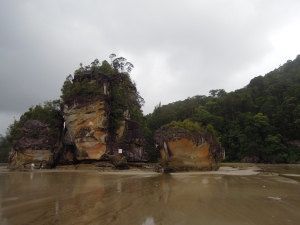
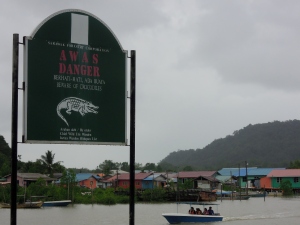
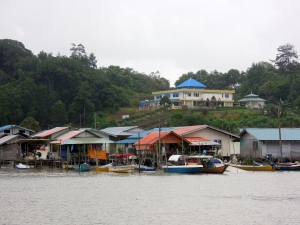
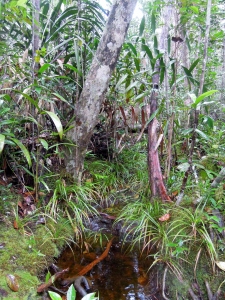
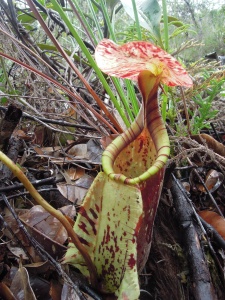
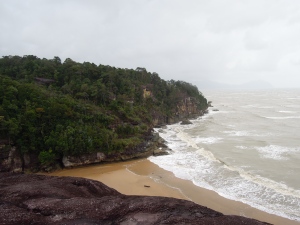
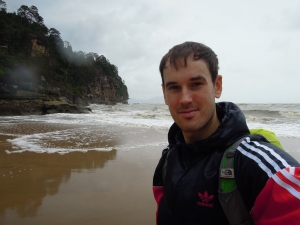
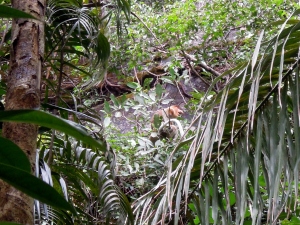
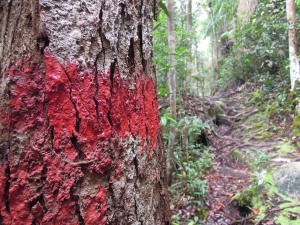

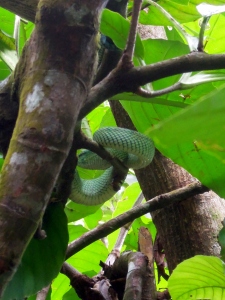
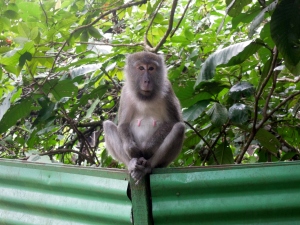
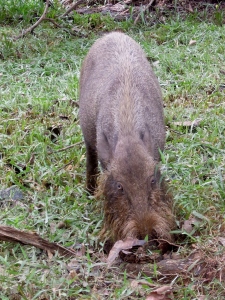
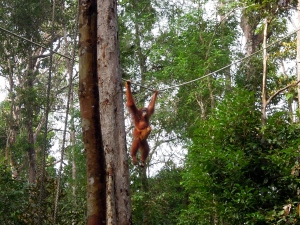
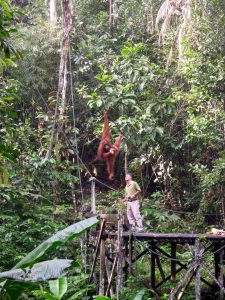
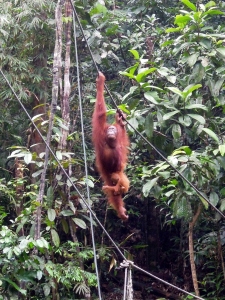
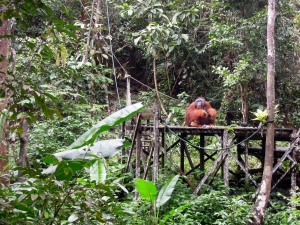
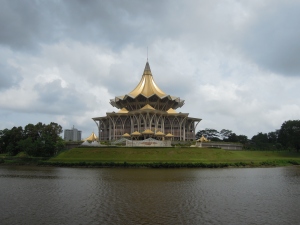
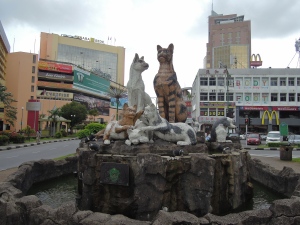
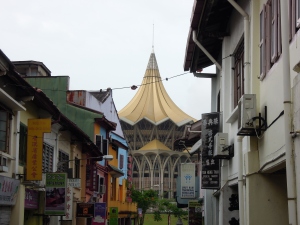
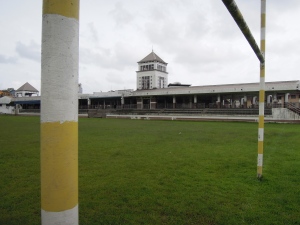
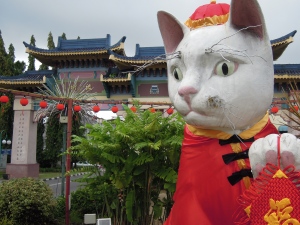
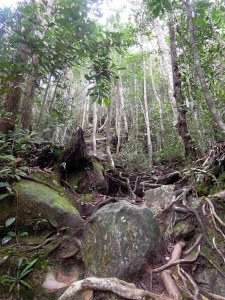
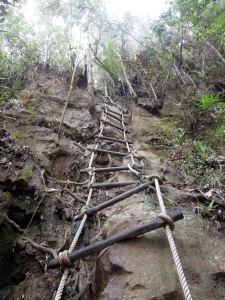

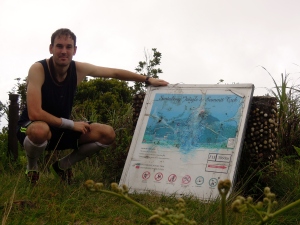
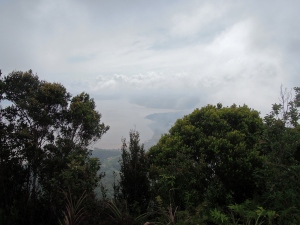

Recent comments